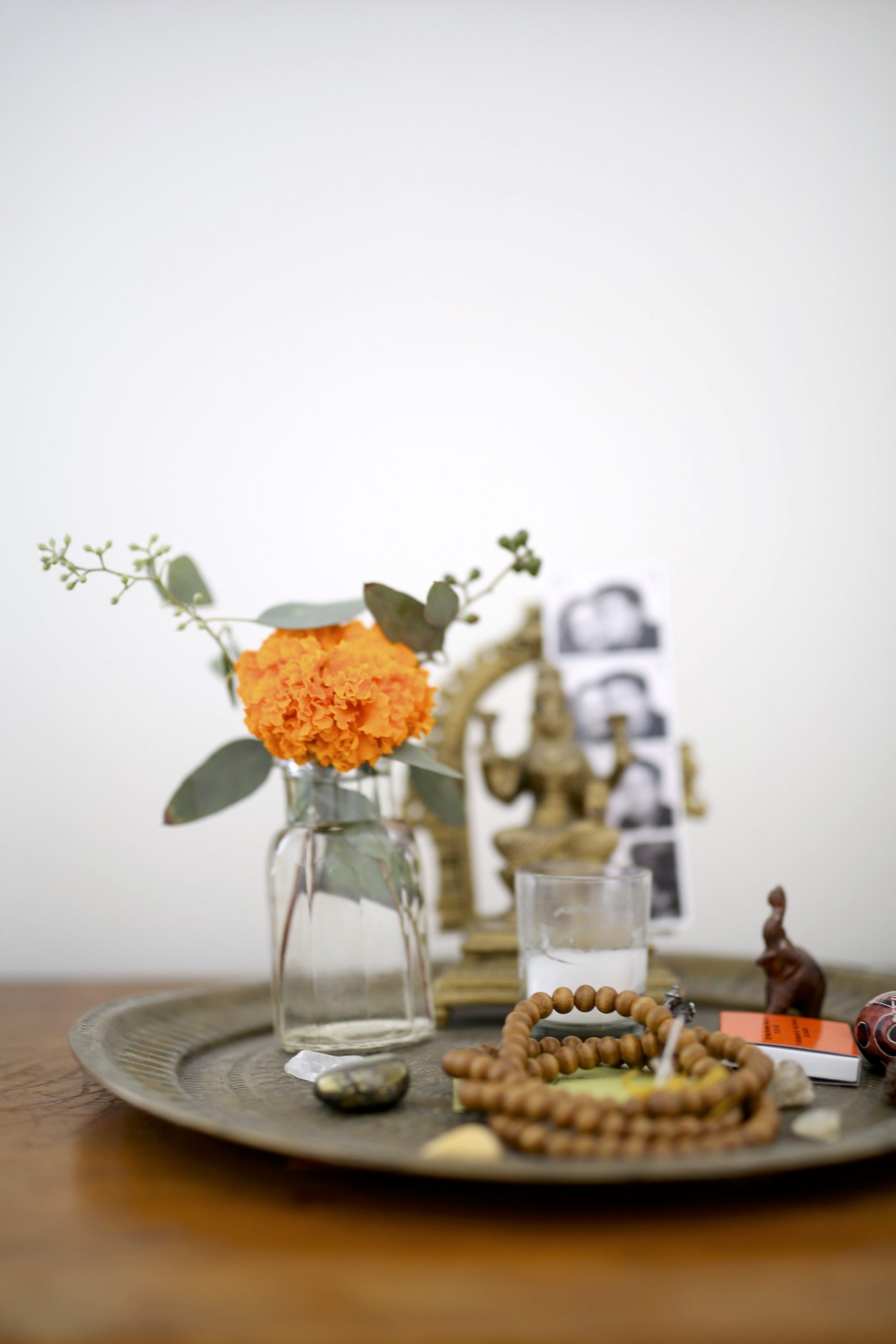I went to the flower district after class today and bought a huge bunch of marigolds. I felt drawn to them and thought their bright orange color captured the golden light of fall. I scooped them up into my arms and took a full inhale and suddenly memories of my mother’s garden came rushing in — she always planted marigolds. I felt the crisp air of Heathen Hill up in the Catskills and could hear Lisa King’s voice as she demonstrated how to soak calendula in coconut oil to make her Heal-All Salve. I saw the flash of magenta, teal, and emerald green silk saris worn by the women at the ashram who were plucking out the orange pedals, amassing what seemed like a thousand pounds of marigolds for their puja. There I was, standing in a wholesale flower shop on 28th and 6th, and it was as if I had been transported into a completely different time in my life.
In the first pada, or chapter, of the Yoga Sutras, Patanjali includes memory as a vrtti, one of the five kinds of mental activity that distort the screen of consciousness (sutra 1.11). While memory, or smrtih (one of my all time favorite Sanskrit words), can be actively retrieved, it can also return unannounced. It can be a welcome or unwelcome guest, triggering either a benign or a painful pattern of thinking that may spark a corresponding and well-rehearsed emotional response.
Memory can be an obstacle to clarity because it’s not always a reliable source of truth. Our memories are captured through the lens of our experience, which is filtered through our beliefs, our preferences, and our habitual ways of seeing. We remember what we want to remember, picking through the scene to find evidence that supports our theories about life and our identity. Our memories may not accurately represent what actually happened. When we rely on memory to navigate the present moment, we may knowingly or unknowingly be reliving a misunderstanding or a misrepresentation of the truth.




In my list of yoga “stuff” I have a quote written from Dani Shapiro: it is a beautiful and strange thing that our lives shape our memories and our memories shape our lives”
I found this so powerful when I read it several years ago and your post today brings to life the essence of what she is speaking about. Thanks as always for sharing your experience to help your readers and students reflect and learn and dig beyond the surface!
What a beautiful quote. Thank you for sharing it with me! I’m so touched that my experience inspires others to dig around.